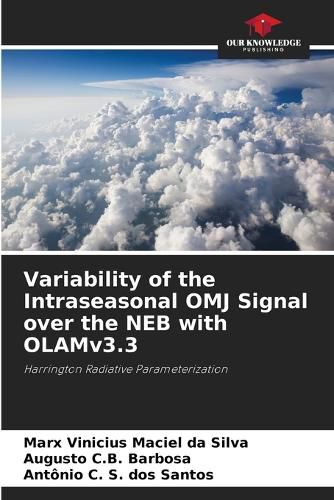Readings Newsletter
Become a Readings Member to make your shopping experience even easier.
Sign in or sign up for free!
You’re not far away from qualifying for FREE standard shipping within Australia
You’ve qualified for FREE standard shipping within Australia
The cart is loading…






Intraseasonal atmospheric phenomena are important modulators of rainfall over South America, especially in the north of northeastern Brazil, where the state of Ceara is located. The Madden-Julian Oscillation, in turn, can influence the positioning and intensity of the Intertropical Convergence Zone - the main factor responsible for rainfall in the Northeast of Brazil (NEB). That said, this paper presents an analysis of the possible influence of the ITCZ on the NEB. The analyses are described through observations obtained from the NOAA data site, as well as through global numerical modeling. The results show that the years 2002 and 2003 have great intra-seasonal variability in the control region over the Indian Ocean - both observationally and numerically, with considerable influence on the NEB region associated with OMJ events. On the other hand, specifically for numerical modeling, using the methodology discussed for selecting a random OMJ event, the year 2011 showed strong variability on the intraseasonal time scale in the INDI control region, with an influence on the NEB region.
$9.00 standard shipping within Australia
FREE standard shipping within Australia for orders over $100.00
Express & International shipping calculated at checkout
Intraseasonal atmospheric phenomena are important modulators of rainfall over South America, especially in the north of northeastern Brazil, where the state of Ceara is located. The Madden-Julian Oscillation, in turn, can influence the positioning and intensity of the Intertropical Convergence Zone - the main factor responsible for rainfall in the Northeast of Brazil (NEB). That said, this paper presents an analysis of the possible influence of the ITCZ on the NEB. The analyses are described through observations obtained from the NOAA data site, as well as through global numerical modeling. The results show that the years 2002 and 2003 have great intra-seasonal variability in the control region over the Indian Ocean - both observationally and numerically, with considerable influence on the NEB region associated with OMJ events. On the other hand, specifically for numerical modeling, using the methodology discussed for selecting a random OMJ event, the year 2011 showed strong variability on the intraseasonal time scale in the INDI control region, with an influence on the NEB region.